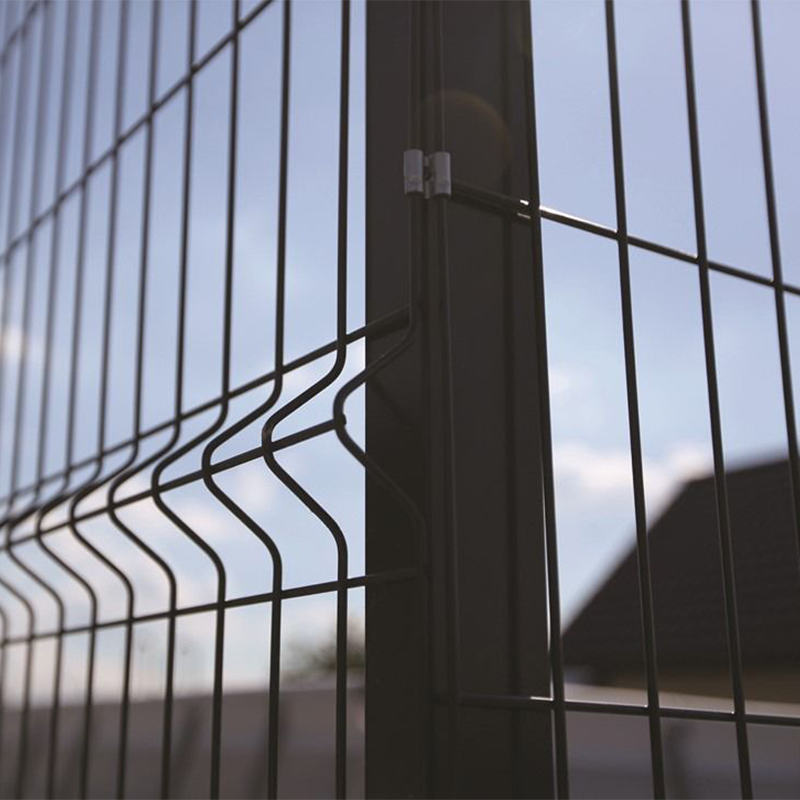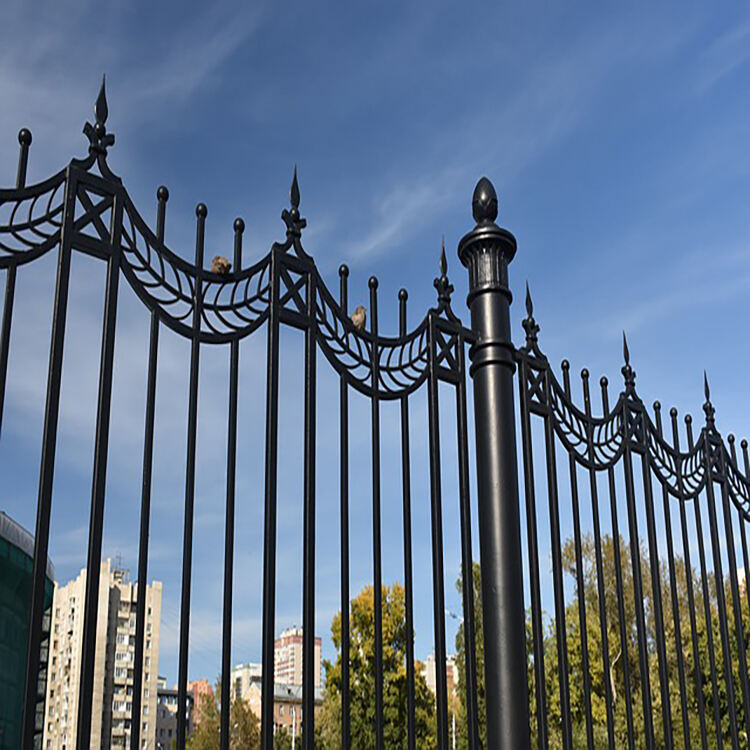Key Benefits of Installing a Garden Fence
Enhanced Security for Families and Pets
A garden fencing provides a fantastic strengthen for added security and stability. It acts as a barrier that protects your family from strangers and stray animals, as well as a physical marker for you children to play safely within. There's some statistical evidence backing that up too, as homes with good fences and the like are less likely to be robbed or vandalized. And also, Fences also protect your pets in the backyard – people and pets appreciate privacy and security, your four-footed family members can run safely free without escaping and getting lost or compromising your garden or other outdoors area.
Privacy from Neighbors and Passersby
A garden fence was also indispensable for keeping a certain level of privacy from the neighbours and the public eye. The increased privacy also makes your backyard a private refuge, protected from eyesores. Solid style privacy fencing provides a serene outdoor gathering space, while solid privacy even works as a sound barrier from nearby highways – homes with solid privacy fencing will have exceptional resale value compared to ones without. Further, the increase in the appraised value of the property due to heightened privacy is an advantage when attempting to sell the home, since a lot of prospective buyers consider the presence of security and privacy measures as important features. Privacy equals more outdoor enjoyment and ultimately, a more desirable property.
Increased Property Value and Curb Appeal
A garden fence is a great investment for enhancing your property (as it potentially makes it look more attractive to anyone passing by and wanting to purchase your home at some time). Several studies in the area of real estate indicate that homes with strong, well-built fencing can sell for up to 10% more than those without. In addition to functioning as a property fence, garden fences can also be aesthetically pleasing while defining property lines. Merit of design With a variety of styles to choose from, such traditional wood types to modern metal fencing choices from trusted metal fencing suppliers, homeowners have no end of choices to enhance the curb appeal of their home. From a classically designed wrought iron fence to a modern looking attentively arranged, the perfect fence has more decorative value than just adding to your homeâs curb appeal.
Wind Protection for Delicate Gardens
One other important advantage of a garden fence is that it can also serve as a wind breaker, which offers superior protection for sensitive flowers and plants. It is especially suited to delicate gardens in windy locations. Windbreaks: Fences create microclimates that are conducive to healthier plants due to decreased wind pressure. Studies by horticultural professionals have illustrate that windbreaks may double a vegetable garden's yield by reducing damage from wind. For the city dweller with a patch of soil, knowing how to put up a chain-link fence can have a lasting positive effect on anything you want to grow. By creating a well planed fencing: for: alldanaclimate.org system, we can improve the overall appearance of our gardens and ongoing growth. This value bonus is then passed on to the rest of our apartments.
Types of Garden Fences for Every Need
Durable Chain Link Fencing for Affordability
Known as one of the more budget friendly options for garden fencing, the chain link fence provides good quality. It is also incredibly durable and requires very little maintenance which delivers long-term value. Furthermore, chain link fences can also made to include privacy slats to create a restricted at home setting for backyard and/or other purposes, providing versatility in design to fit specific styles.
Elegant Wooden Panels for Rustic Charm
Wood These wooden fence panels are perfect for people who are looking for that ‘country’ look in their garden. These are considered to be more natural and has excellent integration with the landscaping especially in suburbs and rural areas. Regardless of how beautiful they are, wooden fences must be properly maintained and cared for in order to last, making them a strong, stylish and practical investment for most families!
Low-Maintenance Vinyl and Metal Options
Vinyl and metal fences are usually more durable than wood, however they need virtually no maintenance, while wooden fencing does. This would be very appealing to a busy home owner as vinyl and metal fences last much longer than wood. They are rot and rust resitant and will outlast less expensive alloy or plastic bearings. Now vinyl and metal fences can achieve any look of wood and iron while still being low maintenance.
Temporary Fencing Solutions for Flexibility
Temporary fencing options are available that are flexible and adjustable to meet your needs whether you are holding an event or moving to a new location. Easy to install and remove, they are a great option for temporary worksites. These fences are available for rent, providing a convenient and temporary solution for safety, privacy and space organization customization depending on the needs of the event space.
Cost and Installation Considerations
How Much Does Chain Link Fence Cost?
Knowing the cost of chain link fencing planning a fence is crucial. The price average for chain link fencing is from $10 to $20 per linear foot; but it may depend on the height and gauge. Homeowners should also consider other costs for installation, as labor charges may vary based upon regional supply and demand. So, my advice is to shop around, get quotes from different suppliers and fencers and you will surely get the best bang for your buck when it comes to your fence.
DIY vs Professional Installation Pros/Cons
When it comes to installing your fencing, deciding whether to do it yourself or to use a professional can be a tough decision. The price is right The task can be time-consuming and requires time and skill (and a few tools) not to mention a ‘cando’ person to make it a DIY At-Home-Installation. Additionally, you receive the peace of mind of knowing the fence complies with all local regulations and laws, and this is a plus to avoid potential legal issues down the road. DIY vs Professional Installation Why do it yourself?: Where DIY offers personalization and learning, Pro ensures that the installation will achieve a polished result.
Navigating Zoning Codes and Utility Markings
Before building any fence, check your local zoning codes and the locations of utility lines with 811. Zoning codes will also stipulate details such as how high and where in your yard your fence can be located in order to ensure that your project is legal as well. Like finding the utility marks is a must. You can't go digging and parking stakes in the ground and things like that risking hitting a line under the ground. You may be able to facilitate for the installation to avoid possible legal headaches by doing some research or asking a local official or two.
Optimal Post Spacing for Longevity
Spaced properly, your garden fence will last a long time without all those patches of weak spots or leaning fence lines. As a general rule, posts should be spaced 6 to 8 feet apart, but this can vary depending on soil and looming fence height. Spacing the posts properly also minimizes the chance of the fence sagging under its own weight and adds proper support to the structure, making it more resistant to high winds, weather and vandalism. It is possible to build a perfectly good fence without this level of rigor, however if spaced properly, you can build a stable and attractive fence that will stand up to the rigors of the environment.
Enhancing Beauty Through Fence Design
Incorporating Climbing Plants and Greenery
The inclusion of climbing plants on your garden fence can provide a natural and beautiful effect. They fill out a structure like a luscious coat to create a living wall that is sympathetic to the rest of the landscape. Plant like forsythia or jasmine is known for its attractive flowers and added privacy. We’re not only talking about aesthetics, but a focus on greenery also adds significantly to the local biodiversity and in turn a vibrant ecosystem from your very own yard.
Horizontal vs Vertical Layout Styles
Your choice of horizontal vs. vertical fence layouts can have a big impact on the overall appearance of your garden. Horizontal patterns normally create the feeling of more space by extending the eye outward, while vertical designs make the roof would seem higher. Or you might just have a personal preference, but it can also say a lot about architectural styles and other kinds of home harmony. Matching the style of the fence to the style of the home makes it appear as if it's part of the original landscape.
Matching Fences to Home Architecture
Choosing a fence that suits your home's style is absolutely key; you'll notice a mismatch without even knowing it. If, for instance, you live in a ranch style home, you might benefit more from a plain wooden fence that gives off a traditional feel and a rustic style feel. On the contrary, sleek metal fences might be a better look for newer homes, creating a stronger contrast for a sharper, more sophisticated look. Youâ 'll get a huge benefit from consulting with design professionals to get ideas and information about which materials and styles best match the unique character of your home.
Decorative Accents like Pergolas or Lighting
Incorporating design features, such as a pergola or lighting.can enhance the overall look and also utility aspect of your garden fence. These amenities form welcoming al fresco areas for entertaining or just being. Decorative elements such as string lighting, can help to turn a garden into a charming retreat, forming an integral part of the general atmosphere and enjoyment of the grounds. This ensures that these enhancing and decorative concepts are practical and not only a delight to the eyes.
Maintenance and Longevity Tips
Seasonal Care for Wooden Fence Panels
With wooden fence panels, regular maintenance is the solution to ensuring a long-lasting life. It’s important to check for any evidence of rot or infestation as these can eventually affect the structural integrity of fences. It is also possible to help the wooden panels retain their solid features by undertaking seasonal cleaning of the panels and resealing, which can shield them from the hazards of weathers, which such as rain may degrade the durability of the wood. It’s important to follow the advice of the pros and professionals who recommend that homes in different climates re-stain their fences every 4-5 years so they continue to look good and do not fall victim to rot as part of proper wooden fence care.
Weatherproofing Metal Fencing Suppliers Recommend
It is important to follow the paint and stain recommendations of metal fencing suppliers to prolong the life of metal fences. One good way to protect the paint and thus the metal is to use rust-resistant automotive coatings or paints made for the express purpose of shielding metal from the elements. It also means you can check for corrosion early and often, which has the potential to save you money by addressing issues before they become major problems. Suppliers such as those who offer metal fencing highly recommend the application of protective coatings every few years, as this will help prolong the life of the fence and help weatherproof your investment, and a little nod of approval for your bottom line.
Repairing Damaged Sections Cost-Effectively
In order to be economical, you must deal with broken areas of your fence immediately. Get more out of your investment – Spotting small infringement early, now offers with a simple patch, may also avoid a big, expensive fix in the future. From swapping out a broken post to filling a small hole, many minor repairs make great do-it-yourself projects. For more severe damage, it’s a good idea to get quotes from several contractors to ensure you are getting the best price for serious work. Also think about making your repairs with reclaimed materials; not only is this more environmentally friendly, it is often more wallet-friendly as well. We add to the recycling pile and save on maintenance, without sacrificing the protection of your fence.



